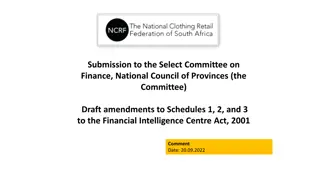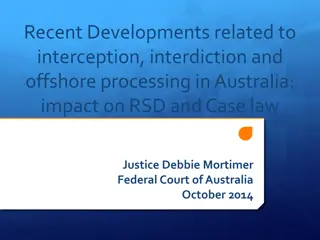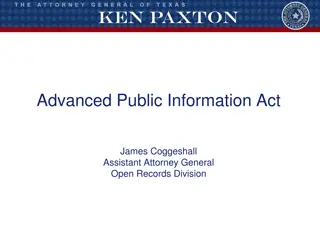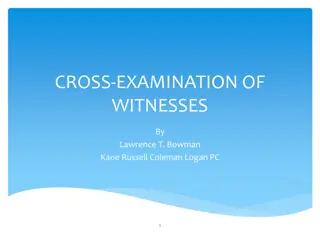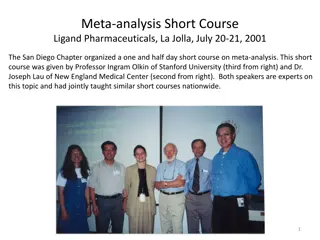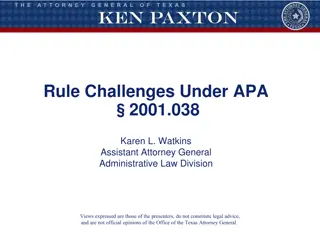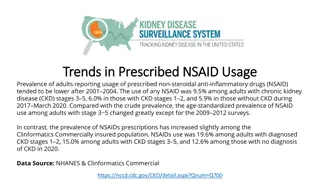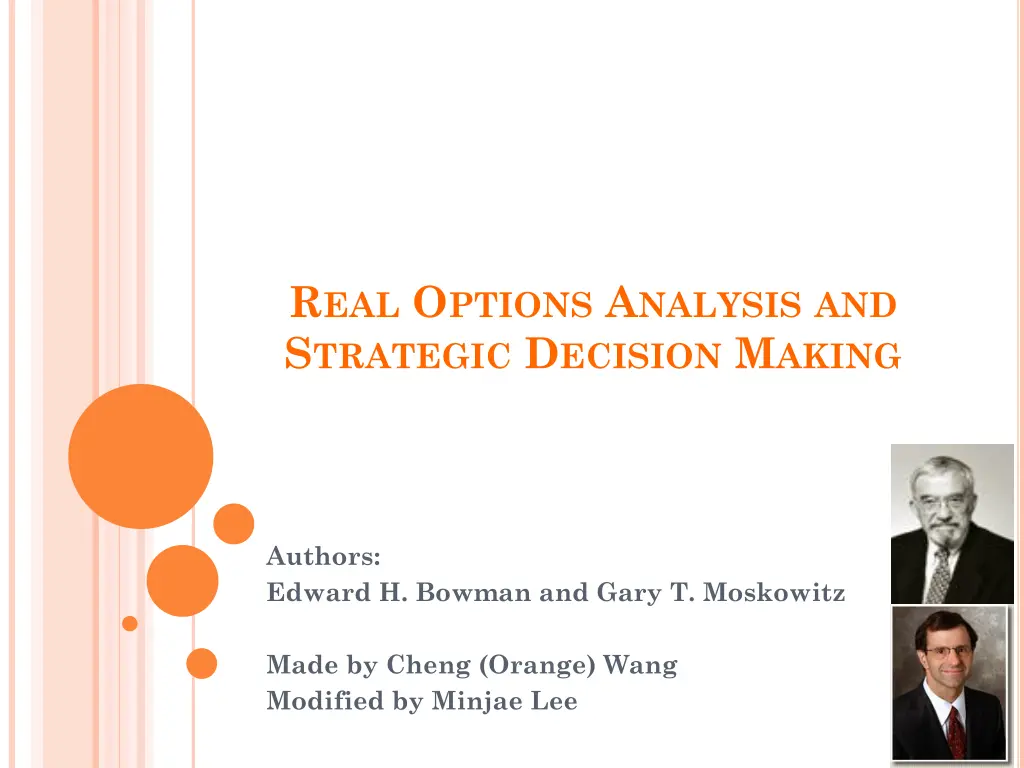
Strategic Decision Making with Real Options Analysis
Explore the limitations of real options analysis in managerial decision-making, using Merck's case as an example. Learn how strategic analysis results can differ from model assumptions and the importance of valuing strategic real options in corporate decisions.
Download Presentation

Please find below an Image/Link to download the presentation.
The content on the website is provided AS IS for your information and personal use only. It may not be sold, licensed, or shared on other websites without obtaining consent from the author. If you encounter any issues during the download, it is possible that the publisher has removed the file from their server.
You are allowed to download the files provided on this website for personal or commercial use, subject to the condition that they are used lawfully. All files are the property of their respective owners.
The content on the website is provided AS IS for your information and personal use only. It may not be sold, licensed, or shared on other websites without obtaining consent from the author.
E N D
Presentation Transcript
REAL OPTIONS ANALYSIS AND STRATEGIC DECISION MAKING Authors: Edward H. Bowman and Gary T. Moskowitz Made by Cheng (Orange) Wang Modified by Minjae Lee
Edward H. Bowman Professor of MIT, Sloan PhD, Ohio State University Deceased, 1998 Gary Moskowitz Professor of SMU, Cox PhD, Wharton School
INTRODUCTION - MOTIVATIONS Despite the theoretical attractiveness of the real options approach, its use by managers appears to be limited. Illustrate some of these problems using Merck's recent real options calculation as an example how the results of strategic analysis can differ from the assumptions of a typical options model the use of a standard options model in a strategic analysis could lead to poor strategic decisions.
VALUINGA STRATEGIC REAL OPTION Corporate decisions can be viewed through strategic options lens Termination of joint ventures, Venture Capital investment, R&D programs, Capital Budgeting decisions The common theme in these decisions two stage process First stage: the company made a small investment; it gives the company the right to participate in the projects (the purchase of the option) Second stage: the company make a decision whether or not to make a larger investment in the project (the exercise the option)
VALUINGA STRATEGIC REAL OPTION: THEPROJECT Merck used the real options to justify an investment in an R&D project Project Gamma The biotech company Gamma has patented its technology but has not developed any commercial applications from it. Merck wants to enter a new line of business but needs the new technology from Gamma. If Merck licenses the technology, it will take 2 years of R&D; but it is uncertain whether the new tech product was commercially feasible or not; If after 2 years, the new product is commercially feasible, it will take another year to do the start-up, e.g. build plants, marketing, working capital, etc. The Proposed Gamma Agreement resembles a call option Merck pays Gamma $2 million license fee over 3 years period Merck will pay Gamma Royalty fee if the product is commercially feasible Merck can terminate the agreement anytime if Merck is dissatisfied with the process The theoretical value should compare to the actual cost of the option: (license fee + R&D cost) Merck expects the start-up costs to be independent of the future value of the new tech.
VALUINGA STRATEGIC REAL OPTION: MERCK SANALYSIS Important parameters in Black Scholes Model (Black and Scholes 1973) Value of the option: C It is on the left side of the equation. Stock price: S Exercise price: K Time to expiration: t Volatility: N Use standard normal dist Risk-free interested rate: r
VALUINGA STRATEGIC REAL OPTION: MERCK SANALYSISUSINGTHE BLACK-SCHOLES MODEL Option Value Parameter Stock price(=Value of the project) The DCF value from the project, assuming project successful; Exercise price: Cost of start-up cost including building plant if decides to commercialize the technology. Time to expiration: Based on expected time to develop product and build the factory Volatility: Based on annual standard deviation of returns of the biotechnology company Risk-free interested rate: Based on the then-prevailing yield on 2- to 4-year treasury bonds. Cost of buying option= costs of licensing + Costs of R&D=$2.8mil
LIMITATIONSOFTHE QUANTITATIVE APPROACHTO REAL OPTIONS There are implementation problems when using quantitative model to value strategic real options Finding a model whose assumptions match those of the project being analyzed; Determining the inputs to the selected model; Mathematically solve the option pricing algorithm This paper discuss the first two problems in Merck case Modeling assumptions Determining the inputs
LIMITATIONSOFTHE QUANTITATIVE APPROACHTO REAL OPTIONS: MODELINGASSUMPTIONS Making the use of financial option valuation models problematic for real options since strategic options often lack some of the explicit features of exchange-traded options. The Black-Scholes model assumes lognormal distribution of underlying stock price with constant volatility: But, lognormal assumption may be inappropriate for a strategic option since standard techniques ignores the product life cycle In the Merck example, the use of the Black-Scholes model is problematic . BS model shows the longer Merck could wait to exercise its option, the more valuable the option is since (1) The increase in value is due to the lognormal assumption where price has more time to move to higher values and (2) The present value of the exercise price is lower for a longer option. However, the longer Merck waits to exercise the option, the lower the value of the option: (1) The bulk of the value of the project comes from the patent protection and the patent has expiration date. (2) Exercise prices could be adjusted for the additional inflation factors.
LIMITATIONSOFTHE QUANTITATIVE APPROACHTO REAL OPTIONS: DETERMININGTHEINPUTS Stock price: In contrast to exchange-traded option, for real options, the analogous stock price may be unknown and/or unactionable. Regarding sensitivity cases, Merck did not attempt to assess the likelihood of the different downside scenarios that it created. Exercise price: Option valuation model assumes that the exercise price is fixed in advance Many strategic investments do not have fixed exercise price Merck use start-up costs as exercise price; but on the date to exercise, Merck could license the tech to another firm or to build a plant of a smaller or larger size, etc. Time to expiration: There is often no set time to expiration for real option Interaction of the time to expiration and the stock price distribution assumptions can produce severe problems Volatility: For strategic option, there are no publicly traded instruments whose risk profile matches that of the proposed investment
CONCLUSIONS: THE ROLEOF OPTION ANALYSIS IN STRATEGIC PLANNING Real options presents planners a Dilemma Theoretically, good way to think about flexibility inherent in investment proposals; Practically, many difficulties in making accurate calculations; and the errors are hard to find; Create more advanced and customized valuation models that better matches the characteristics of the investment proposal A formal quantitative valuation model is a part of strategic planning and capital allocation process Firm need both financial and strategic analysis; Use multiple models to check on each other; DCF relies sole on financial analysis while strategic analysis does not provide information of returns Potential advantage of using the real option: It may change the type of investment proposals that are reviewed; An option perspective inverts the usual thinking about uncertainty absorption in the organizational literature (Kogut and Kulatilaka 2001) An option approach encourages experimentation and the proactive exploration of uncertainty.


